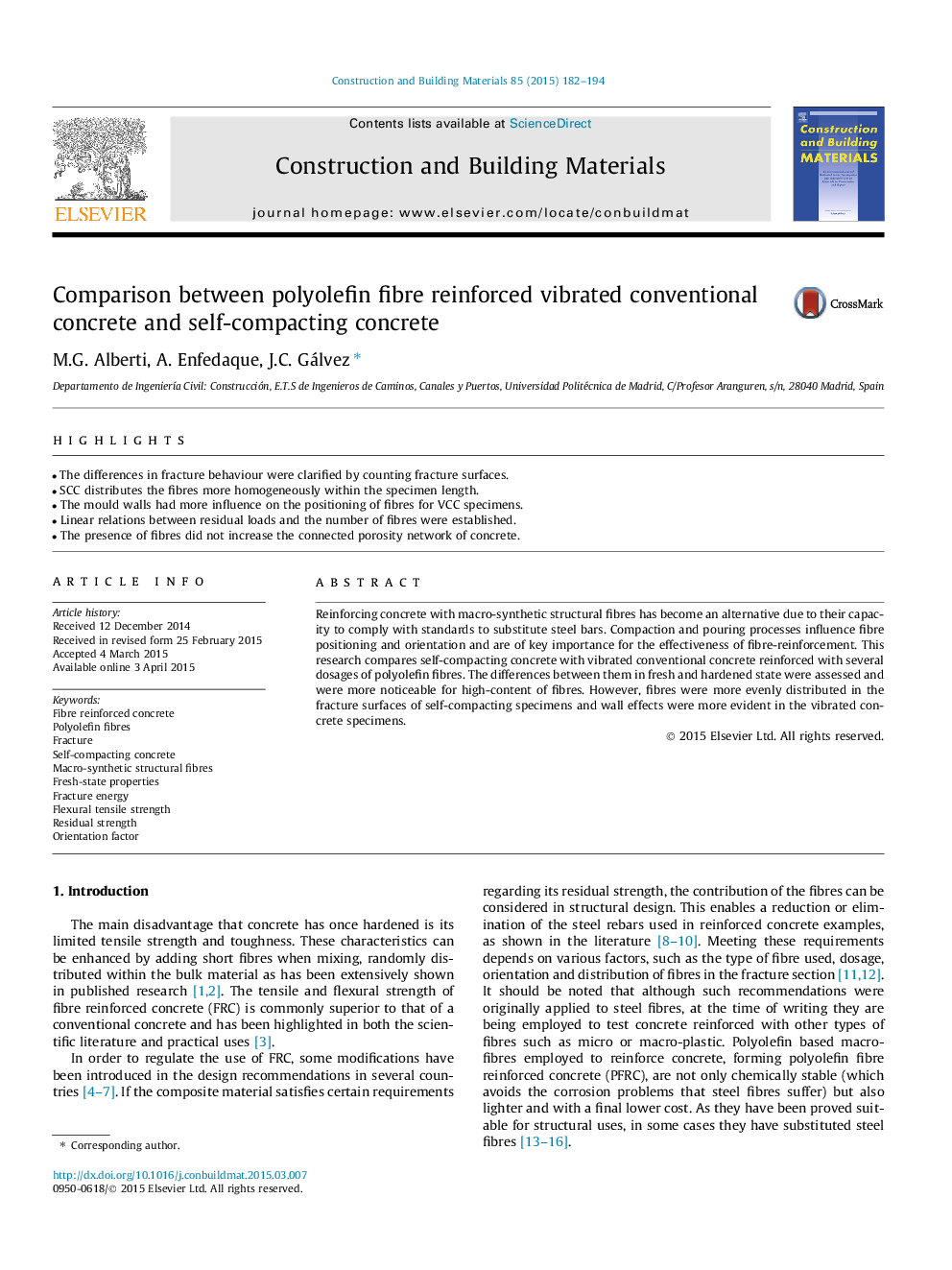| Article ID | Journal | Published Year | Pages | File Type |
|---|---|---|---|---|
| 256989 | Construction and Building Materials | 2015 | 13 Pages |
•The differences in fracture behaviour were clarified by counting fracture surfaces.•SCC distributes the fibres more homogeneously within the specimen length.•The mould walls had more influence on the positioning of fibres for VCC specimens.•Linear relations between residual loads and the number of fibres were established.•The presence of fibres did not increase the connected porosity network of concrete.
Reinforcing concrete with macro-synthetic structural fibres has become an alternative due to their capacity to comply with standards to substitute steel bars. Compaction and pouring processes influence fibre positioning and orientation and are of key importance for the effectiveness of fibre-reinforcement. This research compares self-compacting concrete with vibrated conventional concrete reinforced with several dosages of polyolefin fibres. The differences between them in fresh and hardened state were assessed and were more noticeable for high-content of fibres. However, fibres were more evenly distributed in the fracture surfaces of self-compacting specimens and wall effects were more evident in the vibrated concrete specimens.
